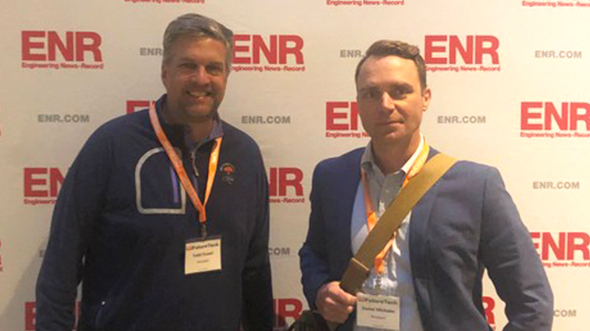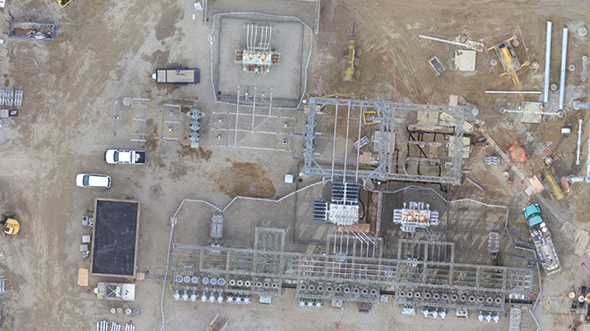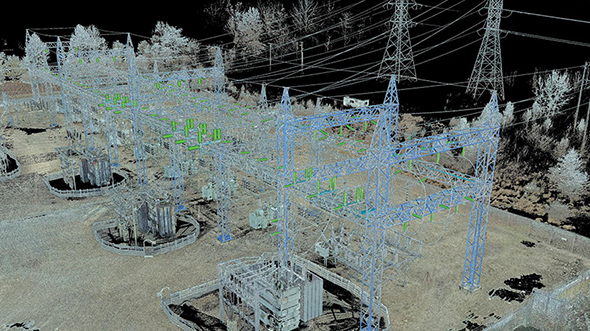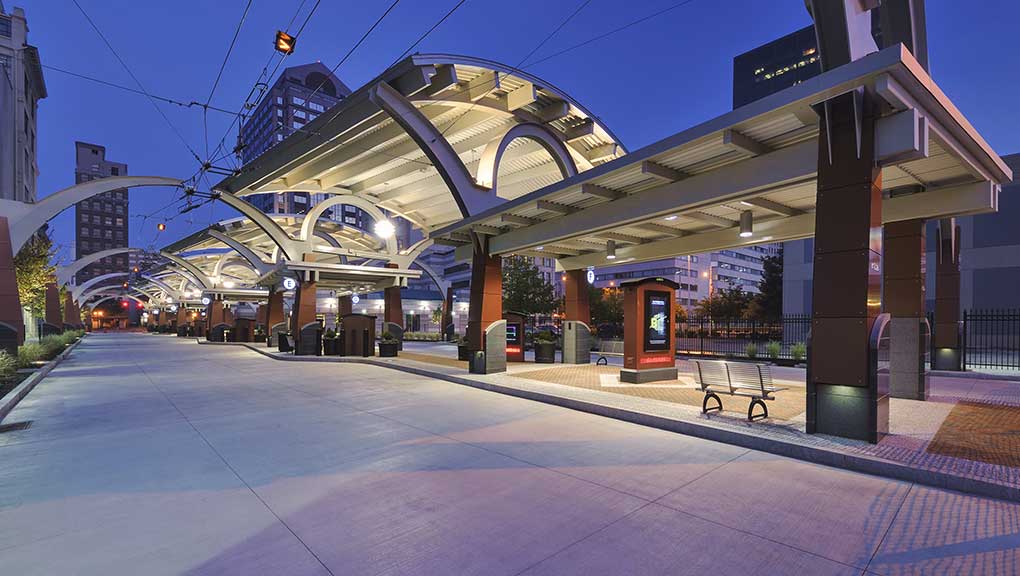
BLOG
—
ENR FutureTech: A Cartographer and a Lawyer Attend an Engineering Conference…
No, that’s not a joke. Todd Duwel (lawyer) and I (cartographer) traveled to San Francisco for Engineering News-Record’s (ENR) FutureTech Conference from June 3 through 5. ENR touts FutureTech as “construction’s leading technology forum,” and the more than 700 attendees were treated to three days of tech talk focused on emerging technology for enhanced productivity, profit and safety. A new conference for us, FutureTech provided an excellent opportunity to see what’s up-and-coming in the building industry.
Buzzwords such as building information modeling (BIM), digital twin/digital duplicate, artificial intelligence (AI), machine learning (ML), virtual reality (VR), augmented reality (AR) and unmanned aircraft systems (UAS) were everywhere, and as expected, many presentations showcased compelling use cases for these now common-place terms. If anyone in the audience doubted that these technologies were “real,” their minds should be forever changed—almost every presentation featured most, if not ALL, these tech acronyms.
While it was great to see folks advancing technology at such a fast pace, I did come away with some overarching observations:
SO. MUCH. SOFTWARE.
The vendor area featured software solutions almost exclusively, and many presentations detailed sophisticated, cloud-based offerings. Construction tracking, project management, workforce scheduling, 2D/3D integration, virtual design and construction, safety management, data analytics, field management, crew location tracking—yep, there’s an app for that.

TRENDING TOPICS
Both McKinsey & Companyand Dodge Data & Analyticsshared some interesting AEC trends, including:
- While slow to start, investment in construction and related technology innovation is growing. The last five years has seen double the funding influx of funds as compared to the previous period.
- Prefabrication and modularization are impacting the industry on a global scale. Labor and material cost savings, schedule adherence, improved end products, and lessened environmental strain are concerns positively affected by prefabrication and modularization. Resulting gains appear to be generate more impact than flashier technologies such as AI, ML and VR.
- While green projects and services are on the rise globally, the U.S. no longer leads the charge. Countries such as Norway, the United Arab Emirates and China are making impressive strides in advancing this initiative.
- While return on investment is important, the ease of use for newer technology is becoming increasingly valid. Simply put, even if a tech has a large return on investment, adoption may be slow if it is not easily integrated and used. More on that later…
GEOSPATIAL SNEAKS IN
Autocorrelation and photogrammetry were frequently referenced throughout the conference. As a geospatial professional, I am well versed in these concepts, but it was interesting to see image meshes and autocorrelated point clouds featured in almost all the construction monitoring offerings. It seems that this processing-intensive approach may surpass terrestrial lidar as the preferred method for 3D visualization. Whether from UAS, panoramic camera or basic smartphone, the applicability of autocorrelation is growing rapidly. This news is excellent for folks familiar with the collection, processing, visualization and analysis of these data sets once deemed novelty.
OTHER THINGS TO THINK ABOUT
Lots of interesting projects were shared, including:
- ALICE Technologies presented AI software. Once various BIM, task and resource inputs are loaded, ALICE runs through various saturation models (material, staff, time and others) to determine potential scenarios for successful project approach and completion.
- Kenko Technology discussed wearable AI for construction workers, not only to determine worker safety and health, but also to test whether particular designs or construction processes are introducing undue stress. The theory is that modifications can be made to future designs to avoid these stress points.
- Built Robotics showcased the use of autonomous dozers, excavators and skid steers on current greenfield projects.
- Bentley acknowledged the need for integration and an open framework to truly leverage AE, CAD, BIM and 3D technologies. They announced the release of iModel.js, an open platform designed to support digital twin creation, access and integration.
- Suffolk discussed using project data and images to better understand project safety and risks and predict incidents before they occur.
Emerging technology, interesting approaches and robust solutions were presented throughout the conference. While the overwhelming positive impact of these technologies came through loud and clear, there remained an underlying sentiment of concern.
If these technologies are so transformative and impactful, why do we still go over budget?
Why do field activities need rework?
Why do as-builts differ so much from designs?
In the end, we are constructing a building. Did the technology support that effort?
I believe that the answer is yes—the technology does support the ultimate goal, but possibly not the overall process, communication and workflow needed to be truly transformative. To be clear, all the showcased advancements will be part of the future of construction, and it is very exciting. Perhaps we just don’t have all our needs addressed quite yet…
What is the answer to those needs? I certainly don’t know. But I will work with at least one lawyer and the rest of my co-workers to try to figure it out.
Share this Post



